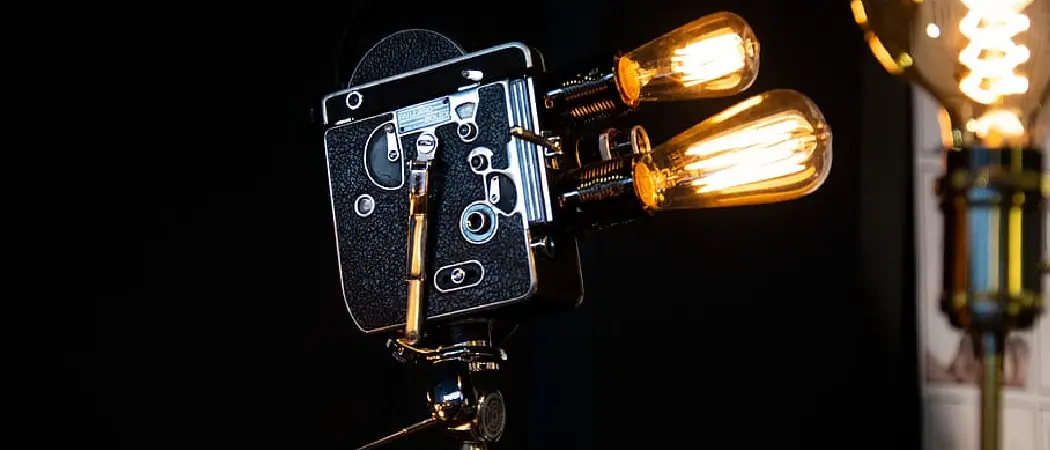In today’s world, hidden cameras are becoming more and more common. From public spaces to private homes, these devices can be found almost everywhere, raising concerns about privacy violations. But what if we told you that a simple light bulb could also potentially be a camera?
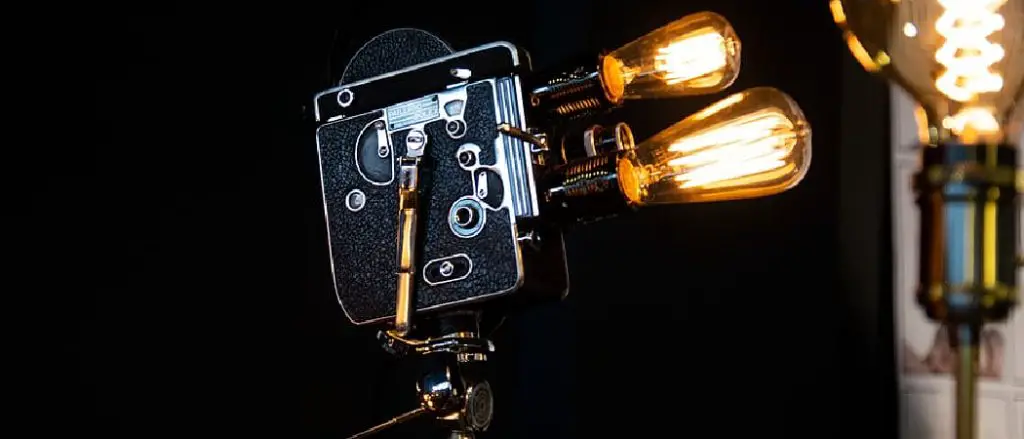
It may sound far-fetched, but it’s actually possible. In this blog post, we will explore the different methods and considerations on how to tell if a light bulb is a camera, so you can protect your privacy and feel more secure in your own space.
Unveiling the Secrets of Light Bulb Hidden Cameras
How Do Hidden Cameras Work in Light Bulbs?
Before we dive into detecting hidden cameras in light bulbs, it’s essential to understand how they work. These devices are essentially miniature cameras that are discreetly embedded within a light bulb, allowing them to blend in seamlessly with their surroundings.
They can be controlled remotely via a smartphone or other device, and some even offer features like night vision and motion detection. This makes them a popular choice for both personal and professional surveillance purposes, as they can capture high-quality footage without being easily detectable.
Why Are Light Bulb Cameras Used?
The most common reason for using light bulb cameras is for security and surveillance purposes. They are often used in businesses to monitor employees or to keep an eye on customers and prevent theft. In homes, they can be used for monitoring children or pets, as well as for added home security.
However, the use of light bulb cameras has also sparked controversy due to potential privacy violations. This is why it’s important to know how to tell if a light bulb is a camera before feeling comfortable in any space.
Methods on How to Tell if A Light Bulb Is a Camera
Visual Inspection: The First Line of Defense
When it comes to detecting a hidden camera in a light bulb, the first and most straightforward method is a visual inspection. There are several indicators that you could look out for during this process:
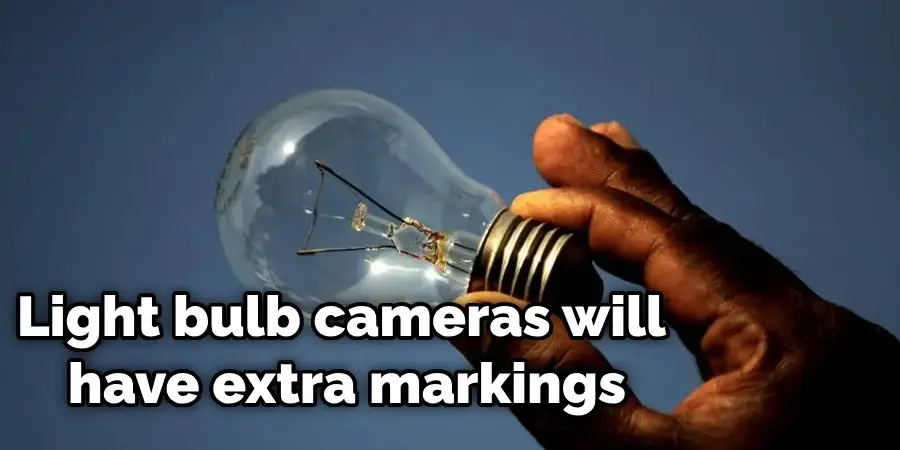
- Size and Weight: A camera-equipped light bulb might be slightly larger or heavier than a standard bulb due to the additional components necessary for the camera to function.
- Unusual Markings or Logos: Sometimes, light bulb cameras will have extra markings or logos that regular light bulbs do not typically feature.
- Visible Lenses or Wires: In some cases, you can spot the camera lens itself or any additional wiring that wouldn’t exist in a regular bulb.
- Glare or Reflection: At certain angles, the camera lens might reflect light in a way that is noticeably different from the rest of the bulb, potentially revealing its presence.
While visual inspection can be helpful, it is essential to acknowledge its limitations. Not all camera-equipped bulbs will have noticeable differences, and some may be designed to perfectly mimic a regular bulb’s appearance. Advanced hidden cameras can be tough to detect through visual inspection alone.
Technological Detection: Tools and Techniques
If the visual inspection method doesn’t yield any results, you can turn to technology for assistance. There are several tools and techniques available that use advanced technology to detect hidden cameras. Some of these include:
- RF Detectors: These devices can detect radio frequency signals emitted by wireless cameras, which is how many light bulb cameras operate.
- IR Detectors: Infrared detectors can identify the heat signatures given off by hidden cameras, which can help to locate them within a light bulb.
- LED Flashlights: By using an LED flashlight, you can illuminate the area and look for any reflections that might indicate the presence of a camera lens.
- Smartphone Apps: There are several apps available that can use your smartphone’s camera and sensors to scan for hidden cameras.
Advanced Detection Methods: For the Tech-Savvy
While straightforward methods may help you identify less sophisticated hidden cameras, advanced detection techniques are necessary to unveil more proficiently disguised devices. Tech-savvy individuals have several tools at their disposal, albeit with varying degrees of complexity and required expertise.
- Radio Frequency (RF) Scanners: RF scanners are sophisticated devices that can detect the radio frequencies emitted by wireless devices, including hidden cameras. They are particularly effective against light bulb cameras that depend on a wireless connection to transmit data. However, they can get quite complex, requiring you to distinguish between various frequency bands and interpret signals that could also emanate from other common household devices.
- Spectrum Analyzers: Spectrum analyzers take RF detection a step further, breaking down the spectrum of electromagnetic waves to pinpoint where different signals are coming from. This method allows for a more precise identification of hidden devices but requires significant technical knowledge to analyze the data accurately.
- Network Scanning: With light bulb cameras potentially connected to a local Wi-Fi network, network scanning could reveal these suspicious devices. Tech-savvy users can use network scanning tools to look for unrecognized devices on the network, which could be streaming video or audio without your knowledge. You would need to be familiar with network protocols and device management to effectively use this method.
Be aware that the use of these advanced methods comes with legal and ethical implications. In some jurisdictions, the use of specific scanning devices may be regulated, and scanning networks without permission could be considered illegal. Furthermore, these detection tools often require adequate technical understanding to operate effectively and to avoid false positives. Before engaging with advanced detection methods, ensure that you are fully informed about the technical and legal complexities involved.
Staying Vigilant: Other Tips for Spotting Hidden Cameras
Besides the methods mentioned above, there are other strategies you can use to identify light bulb cameras:
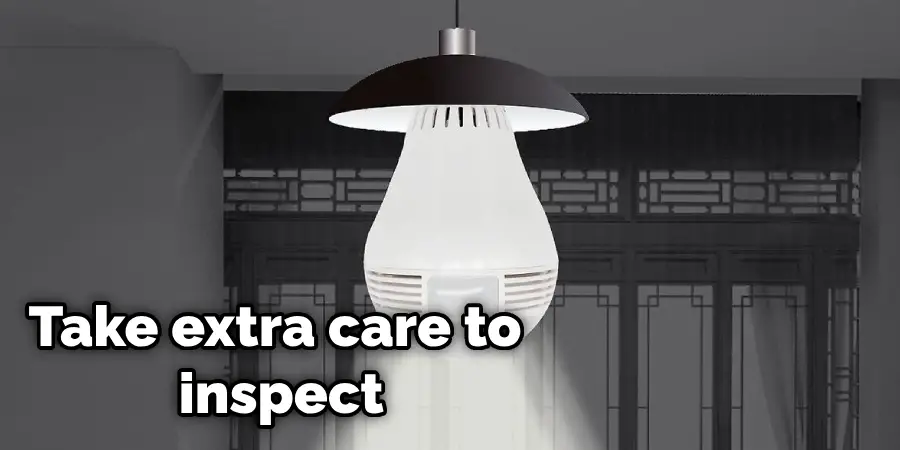
- Check for Blinking Lights: Some hidden camera models may have blinking lights that signify their activity. If you notice any unusual blinking on a light bulb, it could be an indication of a hidden camera.
- Look for Strange Noises: Some advanced hidden cameras may produce slight buzzing or clicking sounds as they operate. If you suspect a light bulb is a camera, try turning off the lights and listening for any unusual noises.
- Be Cautious in Private Spaces: When in doubt, it’s best to be cautious in private spaces where hidden cameras could potentially be placed, such as bathrooms or bedrooms. Take extra care to inspect any light bulbs in these areas.
- Regularly Check Light Bulbs: Make it a habit to regularly check your light bulbs for any changes or indications that they might be cameras. This way, you can catch any potential hidden cameras early on.
By following these tips and using a combination of visual inspection, technological tools, and advanced methods (if necessary), you can stay vigilant and will be aware of how to tell if a light bulb is a camera, and take appropriate action. It’s essential to respect the privacy of others, so always ensure that you are aware of any legal and ethical implications before attempting to detect hidden cameras. Stay safe and stay vigilant!
Precautions and Legal Considerations
Legal and Ethical Considerations
Before taking any action to uncover or disable hidden cameras, it’s crucial to consider the legal and ethical implications. Understanding the laws in your jurisdiction regarding surveillance and privacy rights is imperative since breaching these can lead to legal repercussions. Always act within the bounds of the law and consider the potential invasion of privacy, not just for yourself but others who may be impacted by hidden cameras or your methods of detection.
Understanding Surveillance Laws
Surveillance laws vary widely by location, and what might be permissible in one area could be illegal in another. Familiarize yourself with local regulations governing the use and detection of surveillance devices. In many places, it’s illegal to record someone without their consent, especially in private spaces. Similarly, the use of detection devices and the act of scanning networks could be subject to legal restrictions.
Seeking Professional Help
If your suspicions regarding the existence of a hidden camera become strong and you’re uncertain about how to proceed, seek professional help. Security experts and private investigators are skilled in identifying and dealing with such devices. They also understand the legal boundaries within which they must operate, helping to ensure that any action taken is compliant with local laws.
Responsible Behavior and Respect for Privacy
Always weigh the necessity of your actions against the standards of responsible behavior and respect for privacy. Consider the implications of your findings and actions on the privacy of others. It’s essential to maintain ethical standards and avoid any behavior that might infringe on someone’s rights or break the law. It’s also important to report any illegal activity to the appropriate authorities rather than taking matters into your own hands.
Dealing with a Confirmed Hidden Camera
What to Do If You Find a Hidden Camera
If you have reason to believe that there is a hidden camera in your home or private space, it’s essential to take immediate action. Here are some steps you can take to deal with the situation:
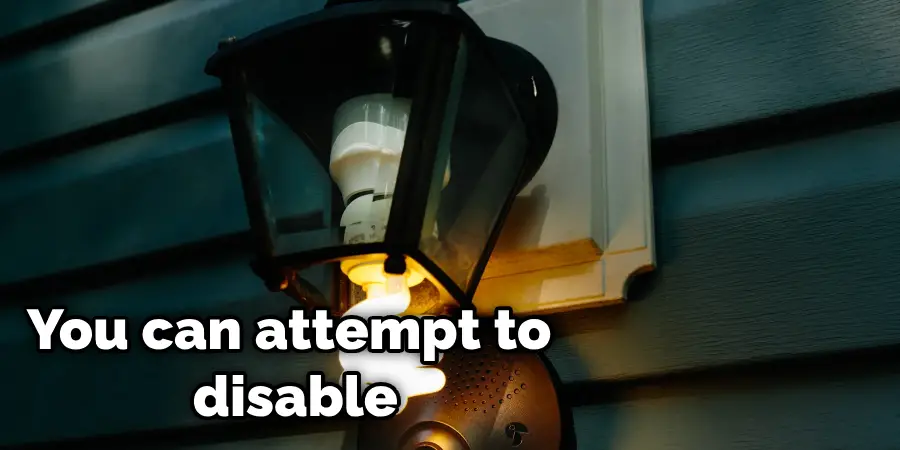
- Document Your Findings: Take pictures and videos of the suspected hidden camera before taking any further steps. This documentation may be useful in providing evidence.
- Do Not Touch the Camera: Avoid touching or moving the suspected hidden camera as it could damage any potential evidence and make it difficult to trace its origin.
- Disable the Camera: If you have the technical knowledge, you can attempt to disable the camera by removing its batteries or unplugging it from a power source. Be cautious and avoid damaging the camera or any surrounding objects.
- Contact the Authorities: If you believe your privacy has been violated, report the hidden camera to the police immediately. They can investigate the matter and take appropriate legal action if necessary.
- Seek Professional Help: As mentioned before, seeking professional assistance from security experts or private investigators can help uncover the device’s origin and deal with it appropriately within the bounds of the law.
Protecting Your Privacy
While finding a hidden camera can be unsettling and even invasive, it’s important to take necessary precautions to protect your privacy. Here are some steps you can take to safeguard your personal space:
- Regularly Inspect Your Property: Make it a habit to regularly check for any signs of potential hidden cameras in your home or private space.
- Use a Camera Detector: Invest in a camera detector device to scan for any hidden cameras that may be present. These devices are designed specifically to identify and locate surveillance equipment.
- Secure Your Wi-Fi Network: Ensure that your Wi-Fi network is secure by using strong passwords and encryption methods. This will help prevent unauthorized access to your network and potential spying through connected devices.
- Be Mindful of Your Surroundings: Stay vigilant and be aware of your surroundings, especially in public spaces where hidden cameras could potentially be present.
- Seek Legal Help if Needed: If you have reason to believe that your privacy has been violated, seek legal help from a trusted attorney to discuss any potential legal action.
Remember, staying safe and protecting your privacy is a shared responsibility. By being aware of the signs and using appropriate precautions, you can minimize the risk of hidden cameras and protect your personal space. Overall, remember always to respect the privacy of others and act within legal and ethical boundaries when dealing with hidden cameras.
Beyond Light Bulbs: Other Hidden Camera Disguises
Hidden cameras can be disguised as everyday objects, making them even more challenging to detect. Some common disguises include:
Smoke Detectors
Smoke detectors are often found in homes and public spaces, making them a common choice for hidden camera disguises. They can blend easily into the surroundings, making it difficult to spot.
Wall Clocks
Wall clocks can also be used as a cover for hidden cameras due to their inconspicuous nature. They can be easily mounted on walls and are often overlooked.
Electrical Outlets
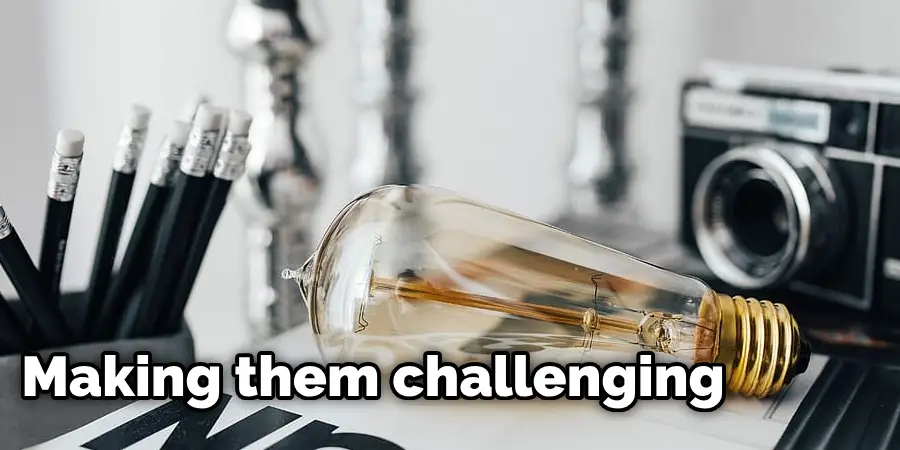
With the advancement of technology, hidden cameras can now be disguised as electrical outlets. These devices can blend in seamlessly with other functioning outlets, making them challenging to detect.
Plants
Hidden cameras can even be disguised as plants, such as fake flowers or potted plants. They can be strategically placed in areas where they can easily capture footage without raising suspicion.
By following the tips mentioned above and being aware of these common disguises, you can increase your chances of detecting a hidden camera in your personal space. Remember always to prioritize your safety and privacy and seek professional help if needed. So, stay vigilant and stay safe!
Conclusion: Empowering Yourself with Knowledge
In the face of ever-evolving surveillance technology, it is imperative to be both aware and proactive. The key takeaways from this guide are the skills to identify and address the presence of hidden cameras effectively. We’ve discussed the necessity of vigilance, the importance of knowing how to react when privacy is at stake, and the available methods to safeguard against unwarranted intrusions. Being educated on the subtleties of detecting hidden cameras disguised as mundane objects like smoke detectors, wall clocks, electrical outlets, and even plants empowers you to protect your privacy more effectively.
The onus is on each individual to remain cautious and take preventive measures, such as regular inspection, utilizing camera detectors, securing personal networks, and maintaining awareness in unknown environments. Your awareness can serve as the first line of defense against privacy invasions. Remember, in situations where your privacy is compromised, it is crucial to lean on the expertise of professionals and the rule of law.
In sum, equip yourself with knowledge and use it to foster a secure personal space. Encourage others to do the same by sharing what you’ve learned. By doing so, you can not only shield your privacy but also contribute to a culture of respect and safety. Ultimately, by taking ownership of your security, you stand in power, fortified with the tools and understanding necessary to navigate a world where privacy is a treasured commodity. Stand vigilant, be empowered, and take control of your peace of mind. Thanks for reading this article about how to tell if a light bulb is a camera.

